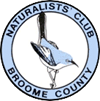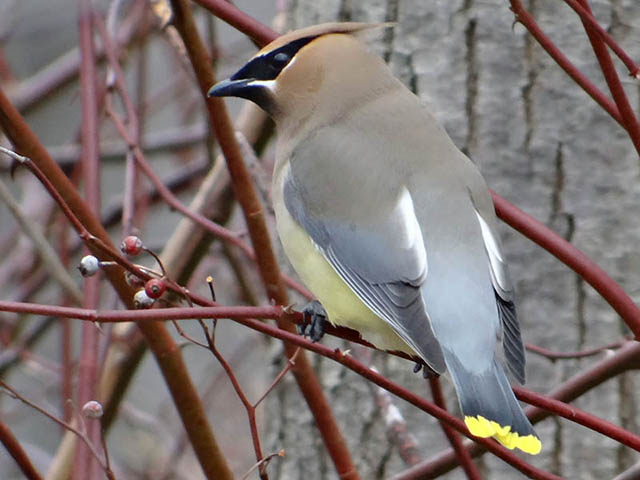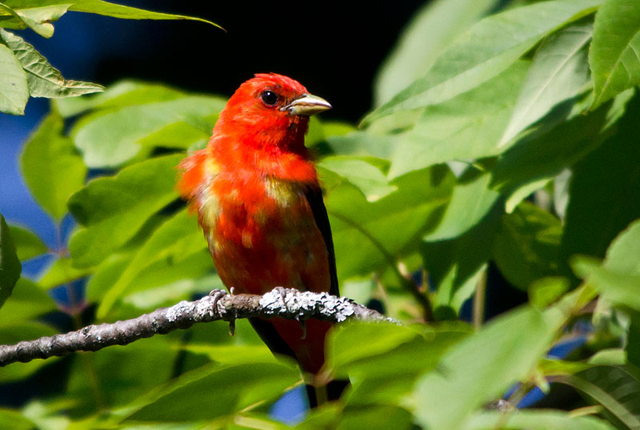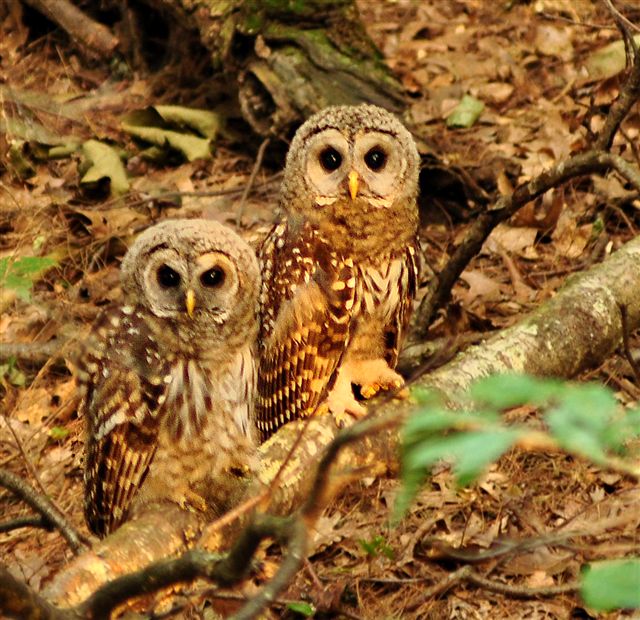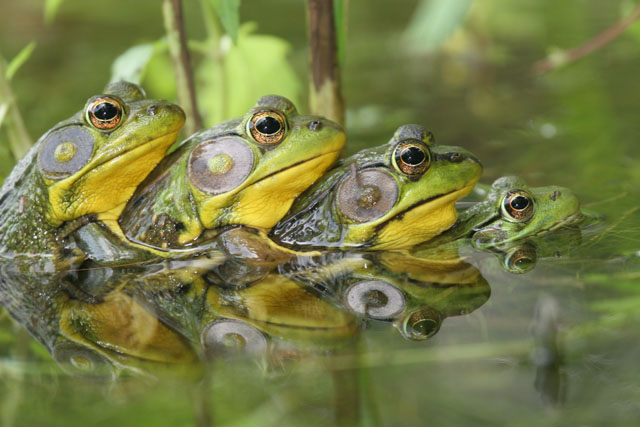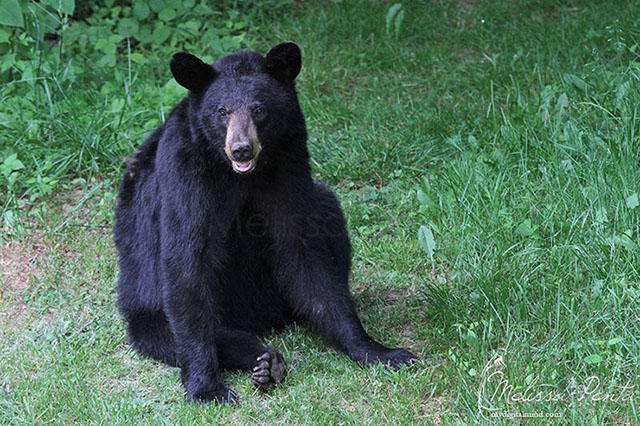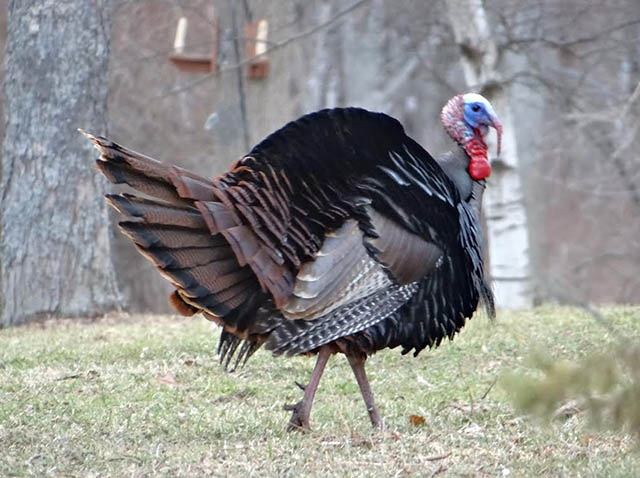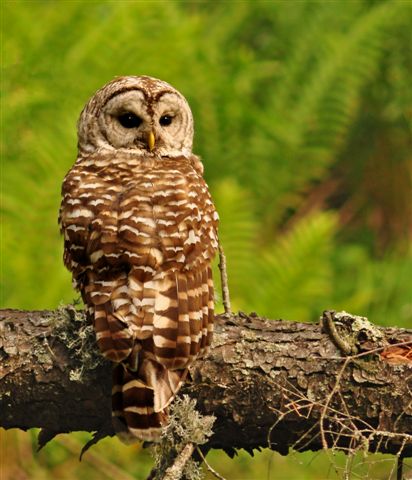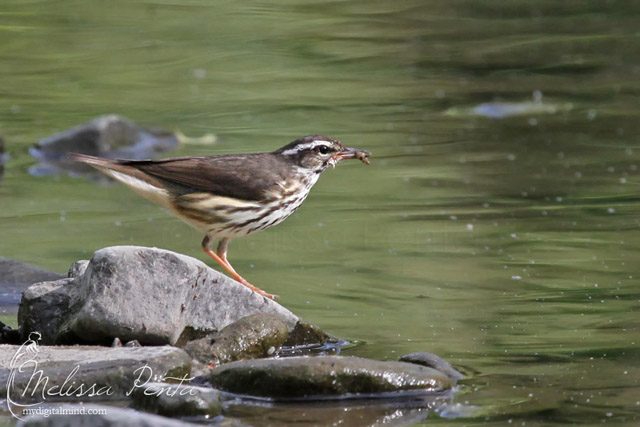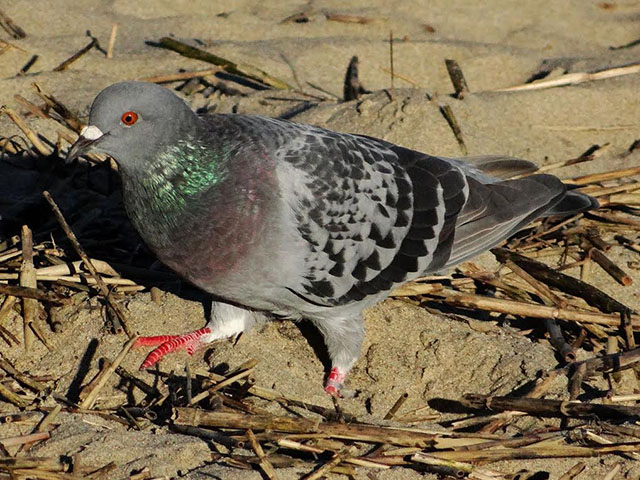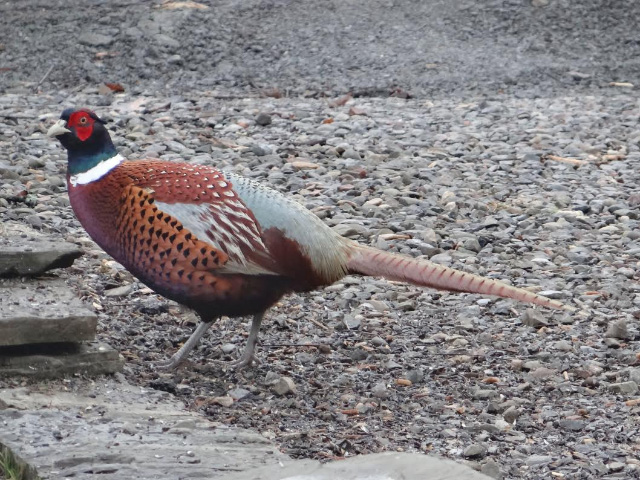For birders “ice out” is an exciting time. As the icebound lakes thaw and open water fissures form, usually in late March and early April, the early waterfowl migration is awaited, the promise of winter’s end. Locally the premier location is the Whitney Point reservoir where flocks of geese, ducks, grebes, loons and gulls occur.
But just a few miles south of the New York-Pennsylvania border is a small lake of some 160 acres in Brackney, Pa. The lake is Quaker Lake and at “ice out” it can be a very rewarding spot for birders. Since good roads hug the lake edge on all but the south side, viewing from the road is easy and the entire body of water can be thus scanned.
Migrating birds tend to arrive late in the day and depart early, so midday can be less active. The best days are mid-March to mid-April.
This spring fewer species in smaller numbers were seen, perhaps due to the unusually mild winter and early open waters northward. Quaker Lake “ice out” was late February this year.
Seen on the lake this spring: common loon, red-throated loon, horned grebe, pied-billed grebe, mallard, bufflehead, lesser scaup, wood duck, surf scoter, old squaw, red-breasted merganser, coot, Canada goose.
And seen in other years: common golden-eye, ring-necked duck, red-necked grebe, ring-billed gull, Franklin’s gull, double-crested cormorant, common merganser, white-winged scoter, hooded merganser, brant. Osprey is seen in most years. On April 23rd, a red-throated loon in non-breeding plumage was seen; perhaps the individual seen earlier at nearby Aqua Terra.
Although Quaker Lake seems to be a overnight rest stop with a daily turnover, some birds, the common loon, in particular, will linger for 2-5 days. Groups of 8 and 12 loons have been seen to remain for days. Perhaps they appreciate the trout the Pa. Dept. of Fisheries provide for them. One year an immature loon lingered until late June when the boating became too intense. Once late April comes, the birds leave and human users take over. But the weeks around “ice out” are rewarding for birders, and Quaker Lake is close to town.
Birders’ Watch is provided by members of the Naturalists’ Club of Broome County. This column was written by Arthur Levy. For information on the Naturalists Club, write P.O. Box 191, Vestal, N.Y. 13850.
Posted in
Birders Watch Columns |
Comments Off on When the ice melts, the birds visit
Bangity-bang-bang-bang! When I heard this persistent noise I knew my old friend the yellow-bellied sapsucker was back in town for another season of courtship and to raise a new brood of baby sapsuckers.
He announced his arrival to his territory by first drumming on the metal chimney of my neighbor’s house with his tough-as-nails beak. Then he attacked the stop sign on the corner and finally the rain gutters on our house. This is the fourth year in arrow we’ve been treated to the sapsucker’s spring ritual. It has always ended with a pair bonding and then excavating a new nest hole in the same dead tree-top in our yard.
The story so far has ended happily every year with a brood fledgling and the parents, with their tors in tow, using our suet feeder before they depart for the sunny South. I have noticed two fledglings each year from the little family. I’m not sure if it is the same male and female that mated in year No. 1 or a combination of an original bird pairing with a new mate.
As if their name isn’t silly enough, sapsuckers have a nickname, “tree vampire.” This tag comes from their peculiar habit of drilling neat little rows of holes in trees so they can suck the sap out with their long tongues. This may weaken a tree, but the sapsuckers are rarely numerous enough to do serious damage. It is possible, however, for a tree that is repeatedly attacked by the woodpeckers to become weak enough to snap at the site of the holes.
But before you run outside to shoo them away from your trees, know that the yellowbellies are doing your trees a service. Too. For they also dig out and eat the harmful insects that lie beneath the bark.
Right now is a perfect time to pursue these birds for a good look at their appearance and behavior. Take a walk through a woodlot and look for the telltale rows of holes. Usually the holes will have sap oozing from them and dripping down the trunk of the tree. Cleaver hummingbirds have learned to visit these trees and help themselves to the sap.
Listen for the sapsucker’s “squeek-o” call, which to me sounds like a little rubber ducky, of the bathtub variety.
Another creative drummer that has been pounding out the message that he is available is the Northern flicker. This pretty woodpecker was formerly known as the yellow-shafted flicker because it flashes a brilliant yellow underneath its wings and tail as it flies. It also has a conspicuous white rump patch that identifies the species. A flicker’s food of choice is the ant, and when this bird is not in the tree-tops it can be found on lawns and park grounds drilling for the little critters.
His continuous long, rolling drumbeat can attract several females who may do a polite kind of battle over the single male. His loud ke-ke-ke-ke cal enriches a morning strill through the woods. The mated flickers will work long into the night to finish excavating a nesting hole for themselves. But they must beware of the opportunist lirking nearby. Who else but the crafty starling will wait for the work to be done and then bully the flickers out of their home.
Birders’ Watch is provided by members of the Naturalists’ Club of Broome County. This column was written by Sara Kinch. For information on the Naturalists Club, write P.O. Box 191, Vestal, N.Y. 13850.
Posted in
Birders Watch Columns |
Comments Off on Woodpeckers let you know when they’re available for watching
Those who know Naturalists Club members often share birding experiences with us. Recently an observer watching three American wigeon ducks on the Chenango River saw a peregrine falcon stoop for a duck a few feet off the water’s surface and miss. Another birder watched a male American kestrel eat a mouse. When you know that the success rate for birds of prey is only one in ten, you realize how luck helps. It’s all in being there at the right time.
Another naturalist, attaching new license plates to her car on March 29, heard a twitter and looked up at a male tree swallow on a utility line. For several years a swallow pair have raised young in her yard’s nest box. She said, “I immediately retrieved it [the box] from the garage and set it in its place where he promptly checked it out. This is much earlier than I’ve ever had my resident birds return.” Her records show return dates of April 11th and 6th for the last two years. She speculated that he “must have had a strong tail wind!” Swallows return to Capistrano on a certain date each year. Broome’s swallows, evidently, have more flexible schedules.
The horned grebes seen recently are in breeding plumage. The yellow feather tufts, or “horns” contrast sharply with the dark red neck color. Ducks of many species are coming through along with American coots, pied billed grebes, common loons and Bonaparte’s gulls. Several birders reported pipit, killdeer, flicker, gray catbird, kingfisher, chipping sparrow and turkey vulture. Naturalists also saw spotted salamander, wood frog, muskrat, painted turtle and mourning cloak butterfly.
The first day of spring had reports of meadowlark, phoebe and kestrel. The next day rusty blackbirds and fox sparrows stopped at area feeders. The nasal “peent” sound of an American woodcock was heard near Oakley Corners.
A birder at Hawkins Pond saw six bluebirds, a pileated woodpecker and a Northern raven. He heard a barred owl call four times in the afternoon from the hillside above the Hemlock Cliffs Trail. A great horned owl fledgling was spotted at another county park. Three people saw Eastern towhees on April 2nd and 3rd.
On April 4th a migrating bird, not often seen inland, was spotted resting, preening and diving on a pond at Aqua-Terra Park. Identified as a red-throated loon, it nests on Arctic ponds, winters along seacoasts and is smaller than the common loon more often seen here in migration.
Two birds reported over the weekend were golden crowned kinglets at Aqua-Terra Park and a surf scoter on Quaker Lake, PA.
From now until May Day we can marvel at the migrating wood warblers with bright breeding plumages. After that day, tree leaves will block our view of these foraging wonders, which vie with ducks for striking, colorful plumages.
On one day each May for the past 16 years a naturalist has recorded bird species seen or heard at a Pennsylvania preserve with woods, field, and swamp habitats. He has racked up 102 different species with 69 as the highest single day total. Twenty-two species of wood warblers are on his list. Warbler species choose specific forage areas. Look for some in treetops, others on ends of branches, large branches near the trunk, lowest tree limbs or shrubs.
Good April and May birding to you.
Birders’ Watch is provided by members of the Naturalists’ Club of Broome County. This column was written by Eileen Patch. For information on the Naturalists Club, write P.O. Box 191, Vestal, N.Y. 13850.
Posted in
Birders Watch Columns |
Comments Off on Birdwatching can occur when you least expect it
Winter, spring; spring, winter. When is it going to make up its mind? A couple of weeks ago milder weather forced the issue. Our tulip, hyacinth, even iris are showing lots of green leaves with the majority of the crocus in full bloom. But a drop in temperatures and the occasional snow squall put us in a panic! What do we do to protect our precious gems? Do we cover them with mulch, compost, or topsoil, or do we leave them alone? I’ve asked some experts on the subject and received different answers. We’ve done a little of each and they are “weathering the storms”.
So what do we do about our animal friends? Do we feed them or not? I guess this is a personal choice. In our household we have chosen to feed. This can present some problems when our cat wanders too close to Mr. Skunk who has woken from his hibernating pattern. Whew! Don’t let the cat out! The deer, which included a doe and her two yearlings a couple of months ago, now total 15, arriving most evenings at 6:00. Interestingly there is an antlered buck and a light-colored doe we call “Blondie”. They jostle for the best position to get at the whole corn poured on the ground for them. This also can present problems such as dug-up turf and chewed plants, but is worth it when our kids exclaim, “deer alert, deer alert!” and we see the show from our kitchen window. With this much food around, gray squirrels are plentiful and fun to watch as this time of year presents a lot of chasing. Stop the feeding and the wildlife disappears, but so does our fun.
With little snow cover this year, the feeder birds have been lacking but constant. I must say that the 6 suet feeders have been the most productive. The usual woodsy birds can be seen throughout the day, and on at least one occasion the resident pileated woodpecker was seen. The mockingbird and screech owl are seldom seen. The dark-eyed juncos are increasing in numbers, the white-throated sparrows are moving in and I’ve seen one song sparrow in the yard. Robins, grackles, and red-winged blackbirds are commonplace nowadays. At nearby Highland Park I’ve been viewing the large flocks of Canada geese winging northward. On March 14th a killdeer arrived, and the next day I spotted an Eastern phoebe. I think the pair of Coopers hawks are in the nest building stage, but have yet to confirm it. All these species sing loudly on nicer mornings which are still few and far between. How we all yearn for warmer days to further observe all of God’s creations.
Birders’ Watch is provided by members of the Naturalists’ Club of Broome County. This column was written by Joe Sedlacek. For information on the Naturalists Club, write P.O. Box 191, Vestal, N.Y. 13850.
Posted in
Birders Watch Columns |
Comments Off on With weather like this, what’s a person to do?
March is cruel – one day spring, the next back to winter. March is fickle – she can’t make up her mind, Spring? Winter? March is an adolescent, leaping forward and at the same time being pulled back to winter. March is moody and unpredictable.
I begin looking for signs of spring late in February (ever hopeful) and in early March. Everyone has his /her own list of what constitutes Spring – snowdrops, maple buds swelling, pussy willows; the first robin or bluebird song, redwing blackbirds, song sparrows at the feeder.
Every year I wonder which bird will be my sign of spring. This year I was surprised. My bird wasn’t on my list! On Feb 28, (also March 1), I saw three Turkey Vultures circling lazily over the valley. What a lovely sight! There were three large dark birds soaring gracefully against the blue sky. Yes, gracefully. On land they may be ugly and ungainly, but in the air they are as graceful as any bird of prey. They are easy to identify: Large, dark birds with their wings at a dihedral.
Turkey Vultures are scavengers. They locate their prey by sight and smell. Vultures eat roadside kill and other carrion (both fresh and in various stages of decay). They are called Turkey Vultures because there are no feathers on their head and neck. Their head and neck is bright red. This lack of feathers is an adaptation that allows them to tear apart large prey and not get their feathers bloody.
Vultures form long-term pair relationships, but if one of them dies, the other finds another mate. Around the Southern Tier, they nest under rocky ledges that are cave-like. They can reuse a nest cave for many years. Prior to egg laying, the pair flies together above the nest site in a coordinated ritual so that their wing tips are nearly touching. On the ground, the male displays before the female. With wings partially spread, he struts Tom turkey-like, and at the same time bobs his head. No nest building for them. The eggs are laid on the nest-cave floor.
Turkey vultures are related to California Condors. Many of the behaviors exhibited by our vultures are also done by the condors. Because the condor is larger, it eats larger prey.
One fond memory I have about turkey vultures happened on a spring day with a group of seventh graders. The boys were fascinated with these birds and decided to do an experiment. Could they lie still in the field and “fool” the vultures into thinking they were dead. They discovered that the vultures weren’t fooled even a little bit!
Other signs of spring birds seen by Naturalist Club members recently are migrating ducks: Pintail, Widgeon, Gadwall, Ring-neck Duck. Other birds are beginning to pair off. Horned larks, Tufted Titmice, Chickadees, and Bluebirds are early nesters and beginning to pair. Finally, by the river one can see large flocks of redwings (the males arrive before the females) and grackles.
What will be next? Spring peepers, woodcock, tree swallows…
Birders’ Watch is provided by members of the Naturalists’ Club of Broome County. This column was written by Gail M. Kirch. For information on the Naturalists Club, write P.O. Box 191, Vestal, N.Y. 13850.
Posted in
Birders Watch Columns |
Comments Off on Turkey vultures don’t deserve their ugly reputation
Looking for birds this time of year can sometimes require determination. One method of “striking it rich” can be simple …follow the chickadees.
I recently found myself amid a flock of about 10 black-capped chickadees; some flew in for a closer look. It seemed as though they were playing as much as they were looking for food. As I stood and listened, I counted well over 20 calls and songs. There was the familiar “chick-a-dee-dee-dee” and the well-known two-note whistle “seee-deedee” …but other sounds could only be described with made-up words like “kapleet-eet,” and “kahblozna.” When I hear the high-pitched warning notes “seet-seet-seet,” I too, scan the skies and trees for danger – such as a hawk.
Another benefit to following chickadees is the company they keep. To other birds, the chickadees act as a warning system, in addition to finding good food sources.
Nearby, downy woodpeckers, white-breasted nuthatches and tufted titmice made appearances. A high-pitched “tseeee” indicated the presence of brown creepers. Two of them follow each other from tree trunk to tree trunk, starting at the bottom and working their way up. One is heard singing its warbler-like song “tee see teesyew, seee.” Can spring be too far off? A dark-eyed junco calls from the brush, and a red-breasted nuthatch from the top of a pine. Amongst the sounds is the “see see see” of a golden-crowned kinglet, who finally shows himself briefly before disappearing again into the trees.
Some of our winter visitors could still be seen in Broome County, so keep an eye out. Rough-legged hawk, northern shrike, American tree sparrow, snow bunting, pine grosbeak, evening grosbeak, common redpoll, pine siskin and white-winged crossbill or red crossbill are a few possibilities.
Also be on the lookout for early spring arrivals such as red-winged blackbird, brown-headed cowbird and common grackle. Some birds that we commonly associate with spring have either returned early or perhaps never left. Bluebirds have been seen in different locations throughout Binghamton in February. Occasional robins and red-winged blackbirds have also been spotted in Broome County.
Other birds of interest seen this month include: short-eared owl, common raven, rough-legged hawk, horned lark in Lisle; pintail, wood duck and evening grosbeak in the Binghamton area; and broad-winged hawk in the town of Maine.
Birders’ Watch is provided by members of the Naturalists’ Club of Broome County. This column was written by Jon Weeks. For information on the Naturalists Club, write P.O. Box 191, Vestal, N.Y. 13850.
Posted in
Birders Watch Columns |
Comments Off on Where chickadees are, other birds follow
Over the years, people have acquired plants with the intention of attracting wildlife, particularly birds. Often these have been shrubs purchased as part of a “Wildlife Package” from their local Conservation Department. A number of these plants – multiflora rose (Rosa multiflora), Russian olive (Eleagnus angustiflora), autumn olive (Eleagnus umbellate) and Tartarian honeysuckle (Lonicera tartarica) – have worked well locally for attracting birds. They provide protective cover and nest sites as well as food in the form of berries or fruit and the insects that they attract.
However, all of these previously listed plants are now on the list of the Top 20 Invasive Plants in New York State. The Invasive Plant Council of New York State (http://www.ipcnys.org/), which developed this list, was incorporated in 1999 with the goal to “organize an effective partnership among public and private organizations to address the need for invasive species information and control across the state.”
The reason plants are listed as invasive is because of their tendency to crowd out native plants and take over large areas. This decreases the biological diversity of these areas, threatening not only native plants but wildlife as well.
It is recommended that we not only stop planting these but also try to remove or control the spread of existing populations. Alternatives such as native viburnums (Viburnum spp.), winterberry (Ilex verticillata), serviceberry (Amelanchier spp.), gray dogwood (Cornus Racemosa) and chokeberry (Aronia spp.) are recommended.
Some bird species that 40 or 50 years ago were not common to our area – cardinal and mockingbird, for example – may have benefited from these invasives. Both will rely heavily on the berries for winter survival. What is harder to measure are the losses of other species that have been displaced. Some bird groups such as sparrows and warblers have declined in numbers. Though there are many reasons for the declines, habitat change is a major reason. Eastern bluebirds are a local species that are both positively and negatively affected by invasive shrubs. Bluebirds are voracious insect feeders during the warmer months, especially while nesting. During the fall, winter and early spring, when insects are scarce, they will rely on berries and will benefit by these plants. Bluebirds prefer open fields and pastures with occasional perches to search for insects during the warm seasons. As the autumn olive and multiflora rose overtake these fields and pastures, their preferred habitat is displaced.
Speaking of bluebirds, during last week’s warm weather, eastern bluebirds were sighted in the Town of Maine along with small flocks of cedar waxwings. Also, during the warm weather, downy and hairy woodpeckers were heard doing their territorial drumming.
Other recent sightings in our area include: robin, snow buntings, tree sparrows, harrier, rough-legged hawk, common goldeneyes, coopers hawk and red-bellied woodpecker.
Birders’ Watch is provided by members of the Naturalists’ Club of Broome County. This column was written by James B. Hoteling. For information on the Naturalists Club, write P.O. Box 191, Vestal, N.Y. 13850.
Posted in
Birders Watch Columns |
Comments Off on Invasive plants can change habitats, forcing birds to leave
It’s tough, but I’ll admit it. While participating in a recent birding event, I made several blunders that an intermediate birder shouldn’t make.
Blunder No. 1: too many layers of clothing. Thinking that I was well prepared for the cold, I dressed in a lot of layers. My feet were so crammed into my boots that I couldn’t move my toes, causing my feet to feel like blocks of ice. It was difficult to move my arms up to hold my binoculars. And every time I moved my head back to look at a bird, my hat (which I had previously thought rather stylish) fell off my head. I was forever scanning the ground for the fallen hat (which wasn’t easy because my scarf limited the movement of my neck to about what you’d have in a neck brace). I’d locate the hat, bend over as best I could, force my arms up, and jam it back on my head.
I can’t imagine what the patrons of the coffee shop thought when I lumbered through the door with a peculiar shuffling gait, my boots clunk-clunking on the tile, hat askew, my head bob-bobbing along as I attempted to look around and move my arms at the same time.
Blunder No. 2: birds quickly discover that you’re there, and then they leave. I guess I’m just out of practice, but I kept noticing that every time I exited the car, there were a lot of bird noises for a short period of time, and then silence. I finally realized that the birds knew I was there and left. So I had a window of opportunity of anywhere from 30 seconds to 2 minutes to record all the birds I saw or heard. This is not easy when you’re adjusting your clothing, unfogging your binoculars, attempting to move your head in the direction of a flying avian, etc. Next time, I’ll roll down the window and look and listen first.
Blunder No. 3: making assumptions. I happened upon a flock of starlings perched in some trees. Up against the gray, cloud-covered sky they looked like little bird blobs – just silhouettes really. As I was counting how many there were, something about one bird flying into one of the trees didn’t seem right. The bird flew differently than a starling and appeared light colored. Forcing binoculars to my eyes, I realized that one of the flocks wasn’t starlings at all but cedar waxwings. Never assume when something looks like a blob in a tree.
Apparently a number of local birders have been braving the recent cold weather without any blunders (at least none to which they’ll admit). Locally a number of ‘nice’ birds have been seen, including flocks of snow buntings and horned larks, a northern harrier, an American kestrel, rough-legged hawks, northern shrikes, mockingbirds, pine grosbeaks, evening grosbeaks, tree sparrows, common redpolls, and golden-crowned kinglets.
Birders’ Watch is provided by members of the Naturalists’ Club of Broome County. This column was written by Diane Krein. For information on the Naturalists Club, write P.O. Box 191, Vestal, N.Y. 13850.
Posted in
Birders Watch Columns |
Comments Off on It’s hard to see when your hat’s in your eyes
The annual Audubon Christmas Bird Count was held on Dec. 30 in Broome and Tioga counties. Participating groups have done a census of the same 15-mile-wide circles each year since 1900, with thousands of birders counting every bird seen on a specific day.
In Broome, 60 species were tallied, with a total of 14,783 individuals. This is up dramatically from last year’s 52 species and 7,993 individuals, although some of the increase is in less desirable species, such as rock doves and European starlings. Nevertheless, there were welcome sightings of a good number of northern mockingbirds, great horned owls, eastern bluebirds, wood ducks, wild turkeys, cedar waxwings and snow buntings.
A screech owl in a Town of Union back yard cooperated by appearing, while two chipping sparrows, late to migrate, were spotted. One of the peregrine falcons that nested in downtown Binghamton this past year was still there on count day. The majority of peregrines would be expected to have migrated by this time. Another rare sighting was two pine grosbeaks feeding in a crab apple tree in the Town of Binghamton.
It was a typical count overall for the Tioga Bird Club, with a total of 55 species, the same as last year, and 8,935 total individuals, surpassing last year’s 6,939. Highlights were a first-ever recorded Bohemian waxwing within a flock of feeding cedar waxwings. A short-eared owl was spotted on count day in an area where a colony is established. A lingering gray catbird was observed in a bush eating rose hips; another uncommon sighting was a northern goshawk. Good numbers of red-bellied woodpeckers, tufted titmice, white-breasted nuthatches, northern cardinals, American tree sparrows and dark-eyed juncos round out the list.
A recent field trip to Ithaca’s Stewart Park rewarded a group of club members with sightings of a long-billed murrelet and an immature northern gannett. A sea bird, the long-billed murrelet is a rare visitor from Siberia and was formerly considered a sub-species of the marbled murrelet, a West Coast bird. The northern gannett typically is found over open ocean, but does occasionally wander to inland waters.
Some years, when forced by harsh winter conditions and lack of food northern species from the boreal forests and tundra will migrate in good numbers south of their normal range. This is now occurring in central New York, and although still sparse locally, American tree sparrows, pine siskins, white-winged crossbills, snow buntings, common redpolls and pone grosbeaks have been seen. Keep a watchful eye or your feeder, you may be pleasantly surprised. Each winter, a club goal is to find a snowy owl nearby but to date, only a few have appeared and these were to the north of us. If you have the good fortune to spot a large white owl sitting in a field or on a fence post, we ask you to alert our hot line at 798-1919. Other unusual sightings are also welcome and appreciated.
Birders’ Watch is provided by members of the Naturalists’ Club of Broome County. This column was written by Marie Petuh. For information on the Naturalists Club, write P.O. Box 191, Vestal, N.Y. 13850.
Posted in
Birders Watch Columns |
Comments Off on Christmas Bird Count reveals high numbers in Broome County
Newer posts →
